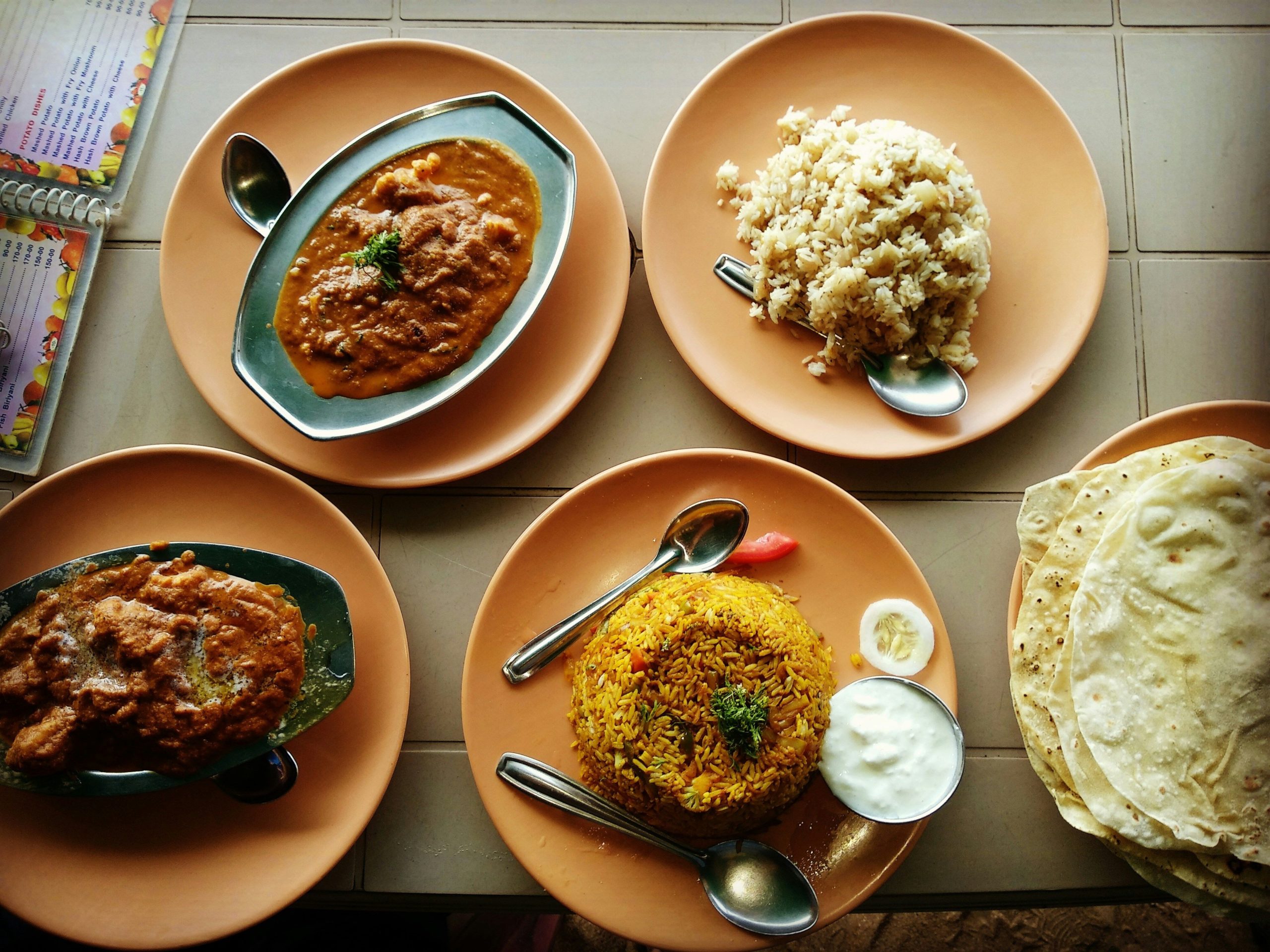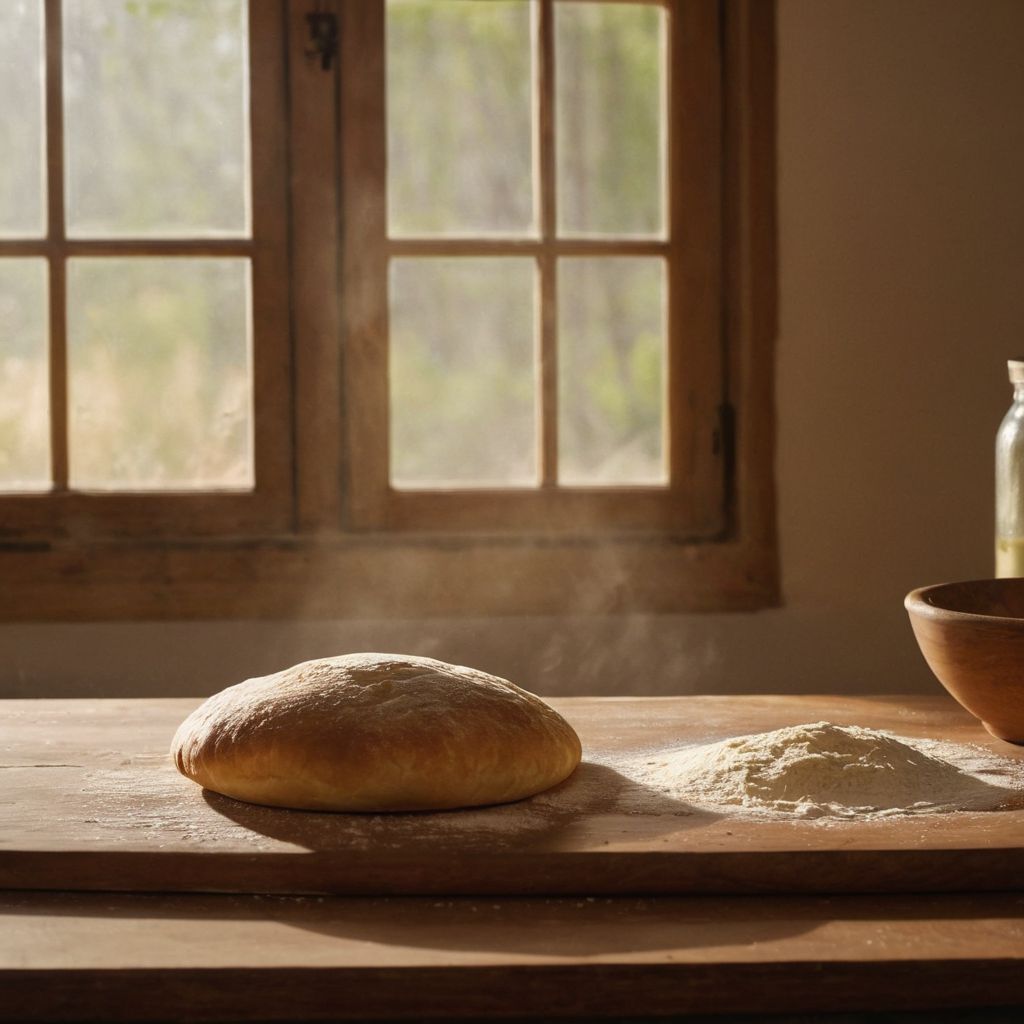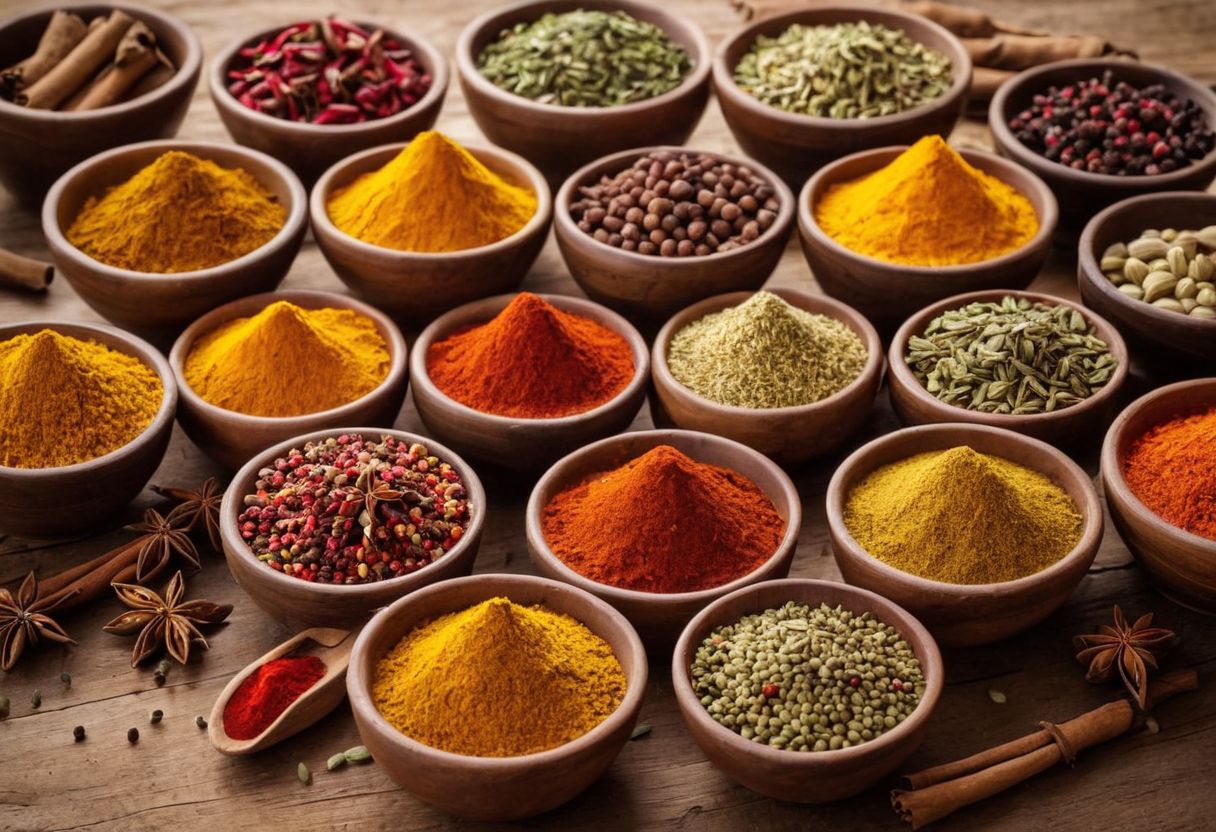Ever felt overwhelmed at the thought of ordering Indian food because you’re not familiar with the options?
You’re not alone; many newcomers find Indian cuisine’s rich flavors and unique ingredients a bit daunting.
Indian cuisine is a delightful exploration of spices, cooking techniques, and diverse regional dishes that promise a flavor adventure.
Our comprehensive guide will walk you through what makes Indian food unique, how to navigate a menu, and the best dishes to try as a beginner, ensuring your first foray into this vibrant cuisine is both delicious and accessible.
What Makes Indian Food Unique for Beginners?

Indian cuisine stands out on the global culinary stage due to its vibrant array of flavors and intricate cooking techniques. Unlike many cuisines where simplicity and minimalism might be the norm, Indian food embraces complexity and depth. Each dish is a carefully crafted symphony of spices and ingredients, each added at specific times during cooking to develop a rich layering of flavors. This method of cooking, which can include both quick stir-frying and slow simmering, ensures that every bite is packed with taste and aroma.
The diversity of Indian cuisine is another hallmark that makes it unique. From the hearty wheat-based breads of the North to the rice-heavy dishes of the South, the variety is staggering. Geographical diversity influences the ingredients and spices used, making the food from one region distinctly different from another. This regional variety not only adds to the complexity but also to the excitement of exploring Indian cuisine, as each area offers its own special dishes and cooking styles.
Key Ingredients in Indian Cuisine for Beginners

When diving into the world of Indian cooking, certain key ingredients and spices are essential to capture the authentic flavors of the cuisine. Cumin, coriander, and turmeric are foundational spices that appear in numerous dishes, each adding its distinct taste and color. Ginger and garlic are also indispensable, often forming the base of many spice pastes and gravies. These ingredients are used not just for their flavor, but also for their health benefits, as many Indian spices are noted for their medicinal properties.
Beyond spices, staples such as basmati rice and lentils form the backbone of many Indian meals, serving as the main components in dishes like Biryani and Dal. Yogurt plays a dual role, used as a marinade to tenderize meats and as a base for soothing side dishes like Raita. Vegetables like onions, tomatoes, and potatoes are common across various Indian dishes, contributing texture and flavor. Understanding these ingredients provides a solid foundation for anyone beginning their journey into Indian cooking.
Is All Indian Food Spicy? A Beginner’s View
A common misconception about Indian cuisine is that all dishes are intensely spicy. However, the truth is that Indian food offers a wide spectrum of spice levels, catering to various taste preferences. The art of Indian cooking is not about overwhelming the palate with heat but rather about achieving a balanced and harmonious blend of flavors. This means that whether you prefer dishes that are mild, medium, or hot, there is likely an Indian dish that matches your spice tolerance.
For those who are cautious about spice, there are plenty of mild yet flavorful options available. Dishes like Korma, Malai Kofta, and Paneer Tikka Masala are creamy and rich, focusing more on aromatic spices than heat. Additionally, many Indian restaurants are flexible and can adjust the spice level of a dish upon request. This adaptability makes Indian cuisine accessible to everyone, allowing you to enjoy the vibrant flavors without the fear of excessive spiciness.
How to Order Indian Food: A Beginner’s Guide
Ordering Indian food for the first time can be an exciting yet intimidating experience due to the diverse and complex menu options available. To start, understanding your own spice tolerance is crucial. Indian cuisine is famous for its use of a variety of spices, which can range from mild to very hot. Before diving into the menu, it’s beneficial to assess how much heat you can handle. This will help you avoid dishes that might be too spicy for your liking and ensure a more enjoyable meal.
When exploring an Indian menu, it’s helpful to know that dishes can vary significantly from one region to another. Northern Indian dishes, for example, often include creamy curries and lots of breads like naan and roti, whereas Southern Indian dishes might feature more rice-based meals and coconut flavors. This regional diversity means there’s something for everyone, but it also requires a bit of knowledge about what each dish typically contains to make informed choices.
Navigating the Menu: Tips for Indian Food Beginners
Navigating an Indian restaurant menu can seem daunting with its array of unfamiliar dishes. A good starting point is to look for well-known dishes such as butter chicken, chicken tikka masala, or palak paneer, which are generally milder and widely enjoyed. These dishes are often a safe bet for those new to Indian cuisine and can be found in most Indian restaurants.
Additionally, most menus categorize dishes based on the main ingredient like chicken, lamb, seafood, or vegetables, making it easier to narrow down your choices. Here are a few tips to help further:
- Vegetarian dishes like dal makhani or chana masala are rich in flavor but not necessarily in heat.
- Ask the server for recommendations or to explain ingredients if a dish’s description is unclear.
- Start with milder options and gradually try spicier dishes as you become more accustomed to the flavors.
Understanding Basic Indian Culinary Terms
Understanding some basic Indian culinary terms can greatly enhance your ordering experience at an Indian restaurant. For instance, knowing that ‘masala’ refers to a mixture of spices used in cooking can help you anticipate the flavor profile of a dish like chicken masala. Similarly, ‘tandoori’ refers to a style of cooking where food is cooked in a clay oven, giving dishes like tandoori chicken a distinctive charred and smoky flavor.
Here are a few more terms that might come in handy:
- ‘Biryani’ – a fragrant rice dish cooked with spices and usually some type of meat.
- ‘Rogan josh’ – a type of curry made with red meat, characterized by its thick, aromatic red sauce.
- ‘Saag’ – a dish made with greens, often spinach, and sometimes combined with paneer or meat. Understanding these terms will help you navigate the menu more confidently and make choices that suit your taste buds.
Best Indian Dishes to Try for Beginners
Venturing into the vibrant world of Indian cuisine can be an exciting experience for beginners, especially when you start with dishes that are renowned for their mild flavors and popularity. Indian cuisine offers a plethora of dishes that cater to various taste preferences, making it a delightful culinary journey for anyone new to this style of cooking. From creamy curries to tender tandoori items, there’s an array of options that promise both flavor and a gentle introduction to Indian spices.
When selecting Indian dishes as a beginner, it’s beneficial to choose those that are not only popular but also less intimidating in terms of spice levels. Dishes like Chicken Tikka Masala, Dal Makhani, and Saag Paneer are excellent starting points. These dishes are crafted with a perfect balance of spices without overwhelming the palate, making them ideal for those who are new to Indian flavors and wish to explore this cuisine in a more accessible manner.
Beginner-Friendly Indian Appetizers
For those new to Indian cuisine, starting with beginner-friendly appetizers can set the stage for an enjoyable meal. Indian appetizers are not only flavorful but also come in a variety of textures and tastes, catering to different preferences. Some popular choices for beginners include Samosas, a pastry filled with spiced potatoes and peas, and Pakoras, delightful fritters made with vegetables and chickpea flour. These appetizers are often served with tamarind or mint chutneys, adding a sweet or tangy dimension to the dish.
Another excellent choice for an appetizer is Aloo Tikki, a spiced potato patty that is both comforting and mildly flavored. For those who enjoy a bit of crunch, Papdi Chaat, which includes crispy dough wafers topped with potatoes, chickpeas, yogurt, and chutney, offers a symphony of flavors that are bold yet not too spicy. These appetizers are not only delicious but also provide a gentle introduction to the intricate flavors of Indian cuisine.
Main Courses for Indian Food Beginners
When it comes to main courses suitable for Indian food beginners, there are several dishes that stand out for their mildness and familiarity. Chicken Tikka Masala, a global favorite, features grilled chicken chunks in a creamy tomato-based sauce and is known for its rich flavor without being overly spicy. Another great option is Palak Paneer, a dish made with soft paneer cheese and spinach, offering a nutritious and flavorful experience with gentle spices.
For those who prefer vegetarian options, Dal Tadka, a comforting dish made with lentils and tempered with spices, provides a hearty and satisfying meal. It’s typically served with rice or bread, making it a complete and fulfilling dish that’s easy on the palate. These main courses are not only delectable but also provide a wonderful introduction to the diversity of Indian cuisine, allowing beginners to explore different flavors and ingredients in a comforting way.
Side Dishes to Accompany Your Indian Meal
Indian side dishes play a crucial role in complementing the main courses, enhancing the overall dining experience. For beginners, choosing side dishes that are mild and familiar can be a great way to enjoy the meal without venturing too far out of comfort zones. Naan, a soft and pillowy bread, is perfect for scooping up curries and gravies, while Jeera Rice, lightly spiced with cumin, provides a fragrant and subtle flavor that pairs well with most dishes.
Raita, a yogurt-based condiment seasoned with cucumber and spices, is another excellent side dish that not only complements spicy meals but also provides a cooling effect. For those who enjoy a bit of texture, Papadums, crispy thin wafers made from lentil flour, offer a delightful crunch. These side dishes are not only easy on the palate but also introduce beginners to the traditional accompaniments in an Indian meal, making the culinary journey more authentic and enjoyable.
Must-Try Indian Desserts for Beginners

Venturing into Indian desserts can be a delightful experience, especially since they are generally milder and sweeter than the main courses. For beginners, trying Indian sweets can be a perfect way to enjoy the richness of the cuisine without the heat. These desserts often incorporate ingredients like milk, nuts, and spices such as saffron and cardamom, offering a unique taste that is both exotic and comforting.
Some must-try Indian desserts include Gulab Jamun, small dough balls deep-fried and soaked in a sweet syrup, and Kheer, a creamy rice pudding flavored with cardamom and garnished with nuts. These desserts are not only delicious but also play a significant role in Indian culture, often served during festivals and special occasions. Exploring these sweets provides a tasty insight into the culinary traditions of India.
Exploring Indian Breads: A Beginner’s Guide

Indian cuisine is renowned not just for its spicy gravies but also for its diverse range of breads, which are essential for scooping up curries or enjoying on their own. Beginners might be familiar with Naan, a soft and pillowy bread cooked in a tandoor, but there are many other types to explore. From the fluffy Bhatura to the crispy Dosa, Indian breads vary widely in texture and flavor, each suited to different kinds of meals.
Here are a few types of Indian breads that beginners should try:
- Chapati: A daily staple made from whole wheat, cooked on a flat pan.
- Paratha: A flaky, layered bread that can be plain or stuffed with vegetables.
- Puri: A deep-fried puff of bread that’s golden and crispy.
These breads not only complement the main dishes but also add to the overall dining experience, making each meal more enjoyable and authentic.
Traditional Indian Drinks for Beginners
Exploring traditional Indian drinks can be a delightful addition to any beginner’s culinary journey into Indian cuisine. Drinks like Mango Lassi and Sweet Lassi are not only refreshing but also easy on the palate, making them perfect for those new to the flavors of India. These beverages are crafted with yogurt, which helps soothe the stomach and complements spicy dishes beautifully.
Another excellent choice for beginners is Masala Chai, a beloved Indian tea that combines black tea with aromatic spices like cardamom, cinnamon, and cloves. This drink is typically enjoyed hot and can be a comforting introduction to Indian spiced beverages. Its popularity in Western culture also makes it a familiar starting point for those exploring Indian drinks.
Kid-Friendly Indian Dishes
When introducing children to Indian cuisine, it’s important to select dishes that are not only tasty but also mild in flavor. Dishes like Aloo Paratha (potato-stuffed bread) and Paneer Butter Masala (cottage cheese in a creamy tomato sauce) are great options. These dishes are flavorful yet mild and are generally well-received by young palates.
Additionally, Kheer (a rice pudding) and Mango Lassi (a sweet mango yogurt drink) can be perfect for children. These dishes are sweet, which tends to be a hit among kids, and they provide a gentle introduction to the diverse world of Indian cuisine. Both are easy to consume and can be a comforting way for children to enjoy their meal.
Explore Indian Cuisine with Indulge‘s Culinary Tours in Zurich
INDULGE offers an exceptional opportunity to dive into the rich world of Indian cuisine through their curated culinary tours in Zurich. These tours are not just about tasting food; they’re about understanding the culture and history behind each dish. With expert guides who are chefs and sommeliers, participants get a chance to explore key Indian dishes and ingredients, making the experience both educational and delicious.
During these tours, you’ll enjoy a variety of experiences:
- Guided tastings at select eateries renowned for their authentic Indian flavors.
- Introductions to essential Indian ingredients and spices that make the cuisine unique.
These elements ensure that even beginners leave with a deeper appreciation and knowledge of Indian culinary arts, poised to explore more on their own or during their next visit to an Indian restaurant.
Frequently Asked Questions
What is a good starter Indian dish?
A good starter Indian dish for beginners would be Chicken Tikka Masala, which features grilled chicken chunks in a creamy tomato-based sauce. This dish is popular and known for its rich flavor without being overly spicy, making it an excellent choice for those new to Indian cuisine.
What is the easiest Indian food to eat?
The easiest Indian food to eat for beginners would likely be dishes like Dal Makhani or Chicken Tikka Masala. These dishes are not only popular and flavorful but are also less intimidating in terms of spice levels, making them accessible and enjoyable for newcomers.
What to eat when you don t know what to eat Indian food?
When unsure of what to eat in Indian cuisine, starting with widely enjoyed and milder dishes like Butter Chicken, Chicken Tikka Masala, or Palak Paneer is advisable. These dishes are generally well-received and provide a gentle introduction to Indian flavors.
Which food is good for beginners?
For beginners, good food options in Indian cuisine include Chicken Tikka Masala, Dal Makhani, and Saag Paneer. These dishes are crafted to balance spices well without overwhelming the palate, making them ideal for those new to Indian flavors.








